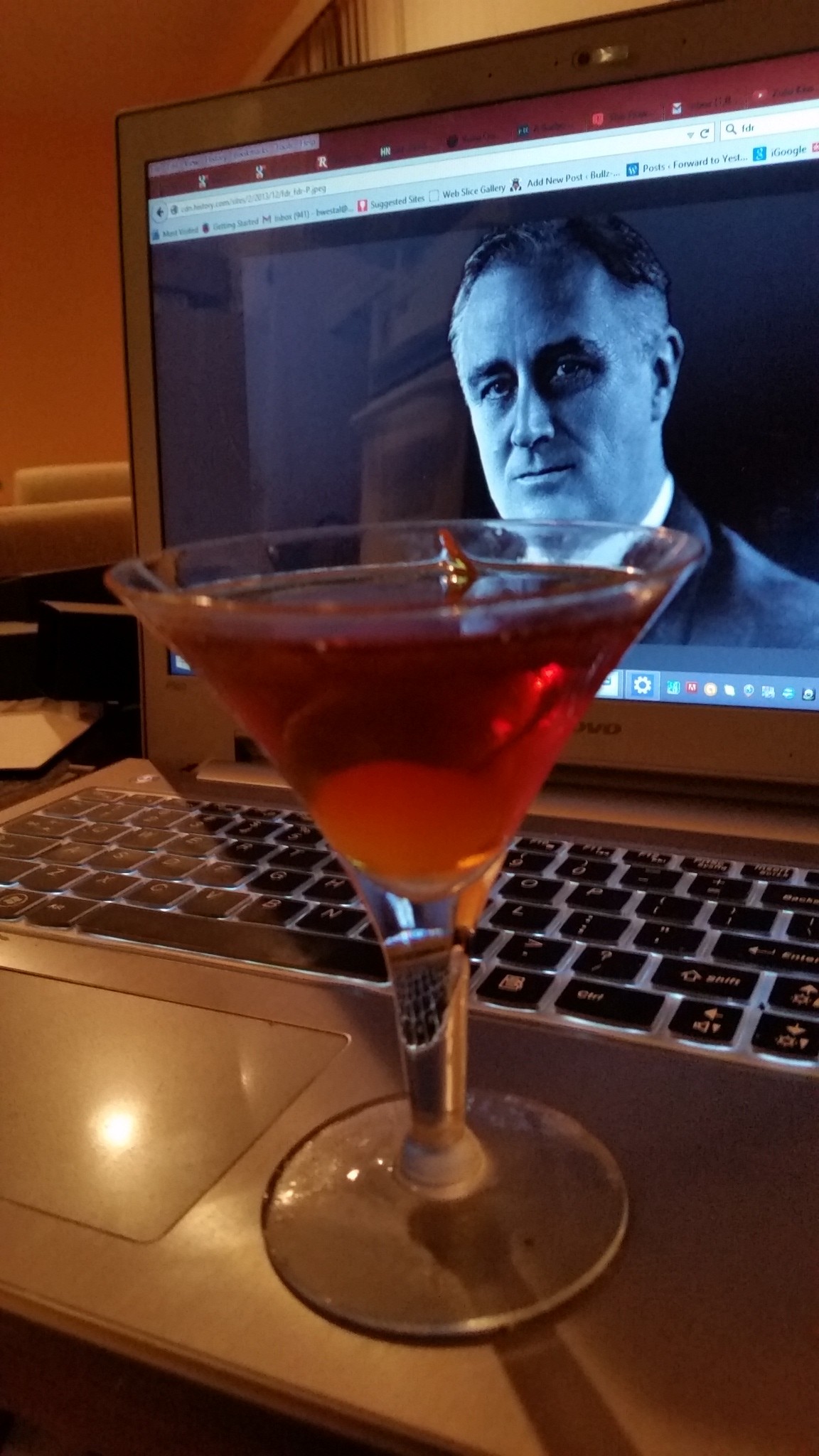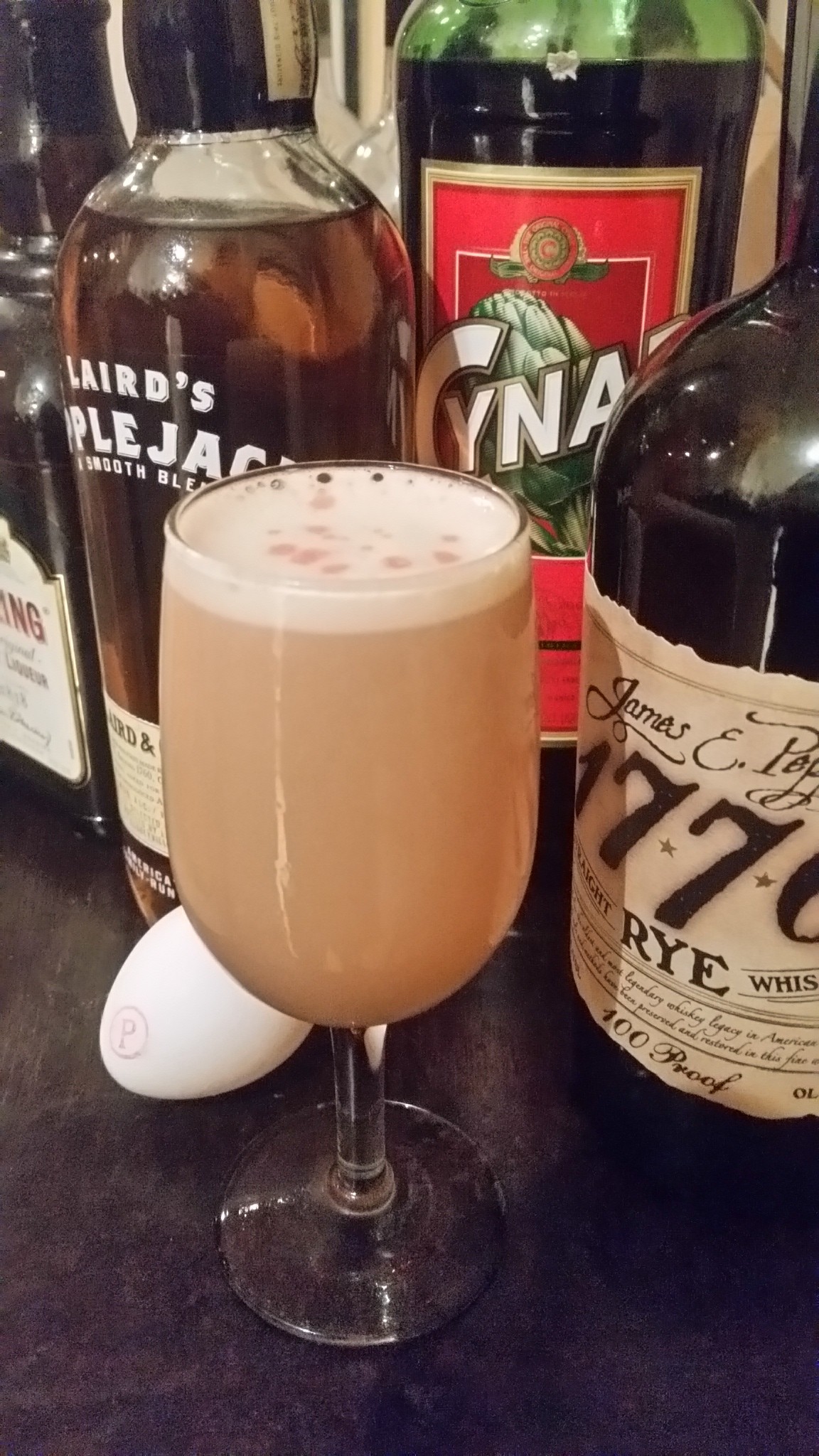Drink of the Week: The Liberal
 The Liberal’s history goes back to before the turn of the 20th century, which means it’s probably dangerous to make any strong connections with modern day political affiliations, especially since this drink doesn’t have any particular story to go with it. When it comes to political labels, in any case, a lot of things have changed since 1895. That’s why modern day conservative writers feel like they can argue that they are the real liberals — as in libertarian — while today’s liberals are, in fact, fascists — a political affiliation that I’m pretty sure didn’t exist when the Liberal was first being mixed. Also, I think there’s maybe kind of a big difference between Benito Mussolini and Adlai Stevenson.
The Liberal’s history goes back to before the turn of the 20th century, which means it’s probably dangerous to make any strong connections with modern day political affiliations, especially since this drink doesn’t have any particular story to go with it. When it comes to political labels, in any case, a lot of things have changed since 1895. That’s why modern day conservative writers feel like they can argue that they are the real liberals — as in libertarian — while today’s liberals are, in fact, fascists — a political affiliation that I’m pretty sure didn’t exist when the Liberal was first being mixed. Also, I think there’s maybe kind of a big difference between Benito Mussolini and Adlai Stevenson.
Still, as someone who has been a proud and very unapologetic actual bleeding heart liberal since the age of 12 or so, I can’t but be attracted to a drink with this name. If your politics are different than my own, however, I can reassure you that drinking the Liberal won’t impact your voting choices next year. Well, as long as you don’t drink five of them on election day, in which case you might find yourself voting for people who are dead, fictitious, or named “Huckabee.”
I can say that I like this version of the drink, which is primarily drawn from the recipe in cocktail historian Ted Haigh’s cocktail revival ur-volume, Vintage Spirits & Forgotten Cocktails. There is a stronger, larger, and less sweet version of this drink, but I don’t love it. Yes, this Liberal is open to charges of being subtly reactionary and stingy to boot. Nevertheless, our taste buds know no ideology and are immune to purity trolling. So, let’s get started.
The Liberal
3/4 ounce bourbon or rye
3/4 ounce sweet vermouth
1/2 teaspoon Torani Amer
1-2 dashes orange bitters
1 cocktail cherry (very desirable garnish)
Combine the liquid ingredients in a mixing glass or a cocktail shaker. Add ice and stir vigorously. Strain into a chilled cocktail glass, preferably a smaller one, and add the cocktail cherry of your choice.
As for your toast, I can’t tell you what to think or do, but you might consider the people who brought us the 8 hour day, the 40 hour work week, the minimum wage, child labor laws, and now accessible healthcare (guaranteed 100% death panel free). If you’d rather not have those things, you can still drink this, of course, but make sure you drink it from a clean glass and don’t get sick and lose your job, because then you’ll be on your own.
****
In his book,Ted Haigh calls for using 100 proof Wild Turkey, Carpano Antica sweet vermouth, and 3 dashes of Amer Picon, which brings up a few issues. For starters, there’s no such thing as 100 proof Wild Turkey these days, not precisely. Instead, we have Wild Turkey 101 Bourbon and Rye. I’m not sure which he meant, or whether the rye was even available when he first recreated the recipe. Since I had the 101 proof bourbon on hand already on hand left over from my pre-Derby Day post, that’s what I used first, along with the always excellent, if pricey, Carpano. Amer Picon is simply impossible to obtain, so I went with the most common substitute, Torani Amer, which is easily obtainable here in California, in any case. As for three dashes…how much is that and where I am supposed to find an amaro in a bottle with a dasher top?
Having made my adjustments, my first attempt at a Liberal was pretty excellent. Sweet, but not one bit cloying and complex enough for slow sipping, with a chocolatey undercurrent thanks to the Carpano. I followed it up with other versions, including ones with 1776 100 proof rye and my cheaper default sweet vermouth, Noilly Pratt. They were less rich in flavor, but still had plenty of complex, more floral, notes to keep your mouth good and busy.
One thing about this drink that surprised me, however, is that it really doesn’t seem to work shaken, which is my usual contrarian preference with the drink’s fairly close relative, the Manhattan. No, this one time the cocktail cognoscenti dogma about stirring over shaking drinks without juice in them proves to be correct. As usual, I could not care less about “clouding” drinks by shaking them. However, I do care a lot about flavor, and the Liberal simply tastes better that way. When I figure out how that reflects my political/philosophical leanings, I’ll let you know.
You can follow us on Twitter and Facebook for content updates. Also, sign up for our email list for weekly updates and check us out on Google+ as well.

 Yes, it’s time for another four-part salute to the just now bygone Turner Classic Movies Festival of 2015. For the second year in a row, I’ll be presenting cocktails of my own creation inspired by some of the amazing films I saw this year. (If you’re interested in last year’s selections, start
Yes, it’s time for another four-part salute to the just now bygone Turner Classic Movies Festival of 2015. For the second year in a row, I’ll be presenting cocktails of my own creation inspired by some of the amazing films I saw this year. (If you’re interested in last year’s selections, start 








